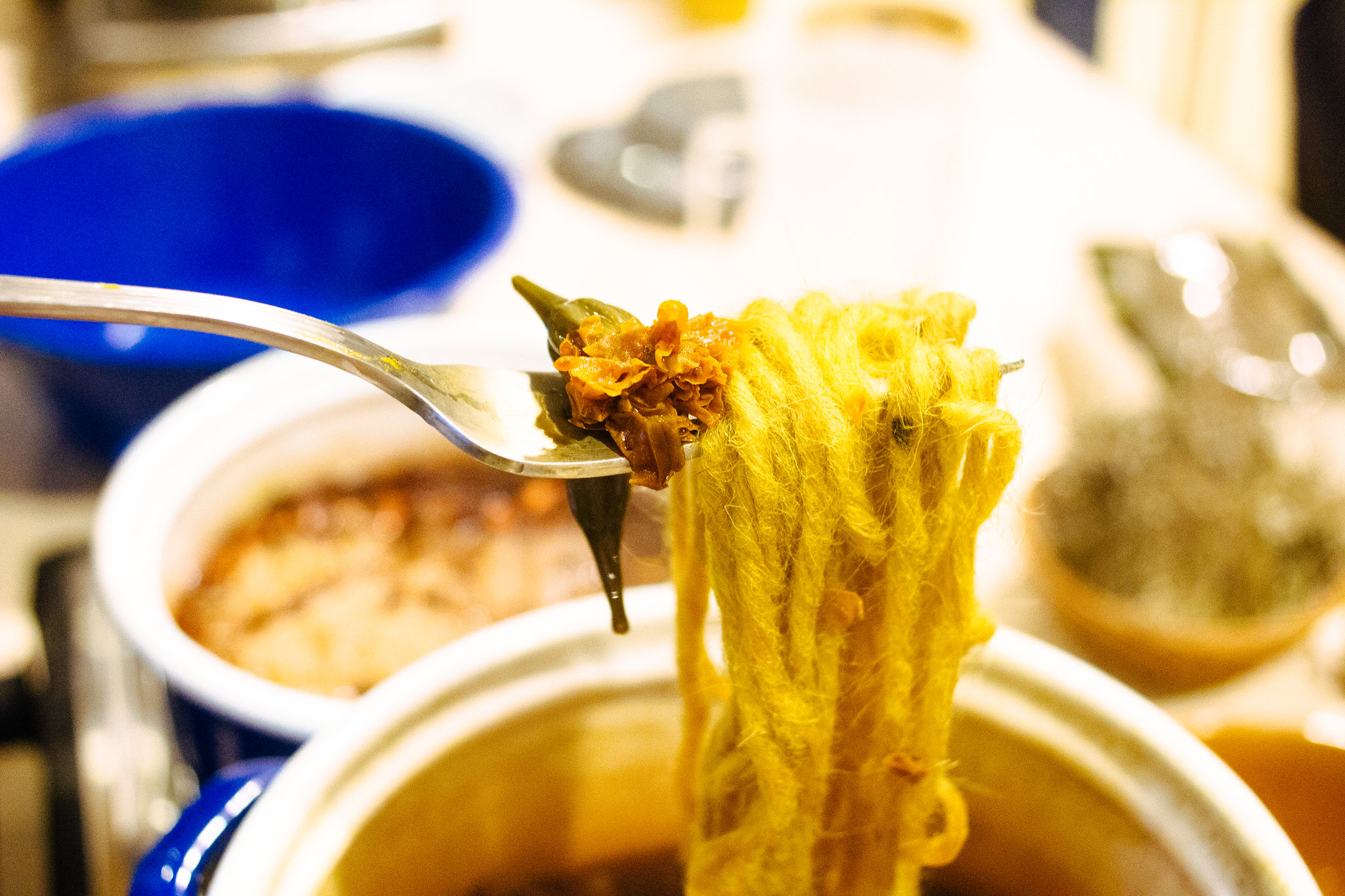The Basics of Natural Dyeing

When you think of colour, maybe you imagine bright flowers, autumn leaves, or the deep green of a forest. But in natural dyeing, appearances are deceiving. A plant that looks yellow might give you red; a brown husk can turn your wool almost black. When it comes to natural dyeing it’s not about what you see, but in how you prepare, combine, and fix the materials.
Why don’t plants always give the colour they look like?
Because the colorants responsible for a plant’s appearance aren’t always the ones that bind to fibre. Onion skins, for example, look like kitchen scraps but produce luminous golden yellows. Walnut husks, dark and rough on the outside, can transform wool into deep chocolate browns. Some dyes release their pigments easily in boiling water, while others need fermentation or careful preparation. And while a few, like walnut or lichens, are able to dye wool without any assistance, most plants need the help of a mordant to make their colour last.
What are mordants and tannins, and why do they matter in dyeing?
Mordants and tannins are the hidden helpers of natural dyeing. Mordants, usually metallic salts like potassium alum, act as the connector that binds colour to fibre.Tannins, on the other hand, are plant-based compounds found in things like tea, pomegranate peel, and oak galls. They’re especially important for fibres like cotton and linen, helping dyes attach more effectively. Some tannins add no colour, while others leave subtle undertones of gold, brown, or red.
